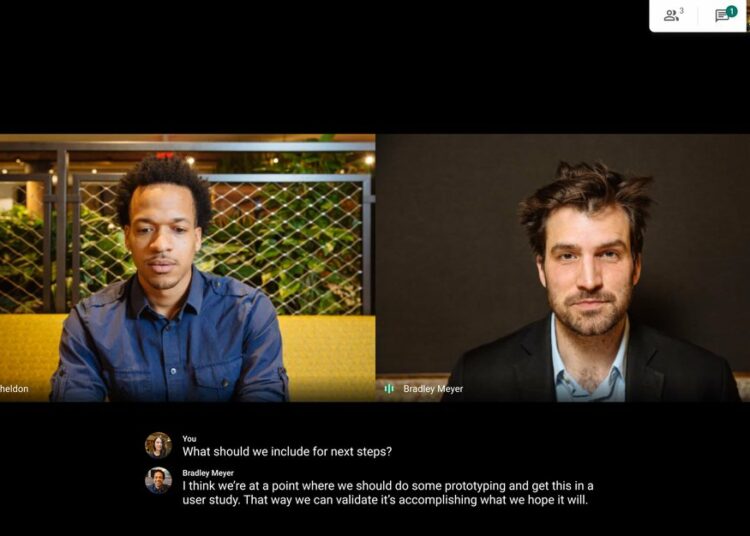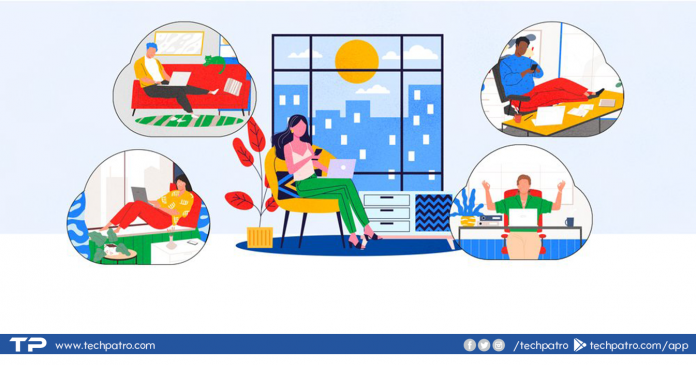Google Meet will be free to users on Desktop, Android, and iOS. Starting early May, the video conferencing service will allow anyone to use the features at no cost, as long as they have a Google account.
Google Meet is equipped with video calls and meetings in general, whether in companies, governments, doctor’s offices, schools. With the change, any individual can use it without restrictions. Meetings support up to 100 participants in a time of up to 24 hours, and from September 30 the time limit will be lifted from 60 minutes.
According to Google, Meet has gained more than 3 million new users a day, last week, Meet’s daily meeting participants surpassed 100 million, the company says.

The free offer is permanent, according to Smita Hashim, director of product for Google Meet. “It’s going to last going forward, just like Gmail,” she said. “Video conferencing has pretty much become an essential service.”
Typically, Google Meet is used by G Suite accounts, which have plans from $26 to $25/User. It’s Google’s collaborative work platform that includes Drive, Docs, Sheets, Calendar, Contacts, and more.
To assist new users without harming the system, the release of the free version will be gradual. Google even opened an alert form about availability. For individuals, Meet can be used for meetings also without restrictions. The service is also linked to Google Calendar, which allows you to bookmark, start, or join meetings.
Businesses and organizations that already have a G Suite license can add new members to teams without changing their plans. A new product, called ‘G Suite Essentials’, has also been created for teams that need dial-in calling capabilities, large meetings, meeting recording, and meeting moderation and the like. G Suite Essentials’ gratuity also runs until September 30.


Admittedly, video calls are popping globally as work and personal interactions move online during stay-at-home directives. Google’s offering has grown — more than 100 million people a day use Meet now. But it has ceded ground to rivals like Zoom Video Communications, which reported 300 million daily participants last week. Facebook also recently released a free video chat service called Messenger Rooms.
Among the features, the platform offers screen sharing, real-time subtitles, a low-light mode that uses artificial intelligence to adjust lighting and noise-canceling that filters out background sounds that can cause distractions.
Also Read: The rise of Vertical videos and its Future
Highlights of Meet default-on safety measures:
- Provides a strong set of host controls such as the ability to admit or deny entry to a meeting, and mute or remove participants, if needed.
- Meet doesn’t allow anonymous users (i.e., without a Google Account) to join meetings created by individual accounts.
- Meet meeting codes are complex by default and therefore resilient to brute-force “guessing.”
- Meet video meetings are encrypted in transit, and all recordings stored in Google Drive are encrypted in transit and at rest.
- Meet doesn’t require plugins to use Meet on the web. It works entirely in Chrome and other modern browsers, so it’s less vulnerable to security threats.
- On mobile, we have dedicated Google Meet apps in the Apple App Store and Google Play Store.
- Meet users can enroll their account in Google’s Advanced Protection Program—our strongest protections available against phishing and account hijacking.
- Google Cloud undergoes regular rigorous security and privacy audits for all its services. Our global compliance certifications can help support regulatory requirements such as GDPR and HIPAA, as well as COPPA and FERPA for education.
- Your Meet data is not used for advertising, and Google doesn’t sell your data to third parties.
Read the latest tech news in Nepal, events, reviews, leaks, deals, gadgets, on TechPatro web, follow TP on Facebook, Twitter, Instagram, and Download TechPatro App.













